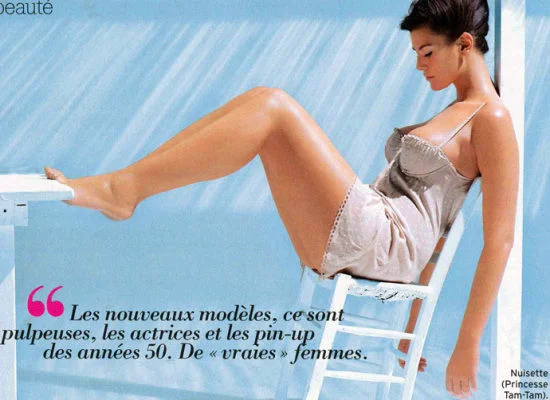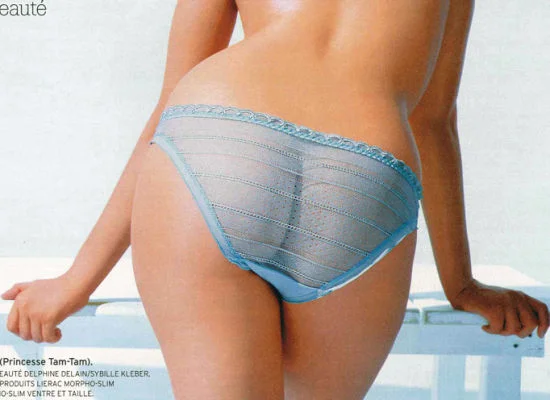Take a solid minute and consider all of the lore surrounding the concept of “her measurements.”
You know the ones: bust, waist, and hip. Music, film, anthropology, and even hard science love to determine, study, manipulate, and give meaning to those three numbers. Books have been written about them. Numerical formulas have been created using them. Careers have been made by them. There’s no doubt that Americans are down-right obsessed with women’s sizes.
In the fashion industry, the definition of female – a set of measurements and proportions that go with them – is now so non-negotiable, so mathematical, that there is no room for variation based on real-life patterns of size or growth. As a result, bigger women are just iterations of the same “golden ratio” that smaller women are judged by, similar to standard-size dogs vs. toy breeds vs. teacup breeds, as determined by the American Kennel Club. For proof, check out mannequins in plus-size stores; it’s like someone clicked on the corner of a skinny girl and just dragged her out proportionately. Which explains the superhuman height and Neanderthal-sized heads.
In response to criticism over the rigid, inhuman standards perpetuated by their industry, fashion folks have claimed that models exist to give women something to aspire to – or in other words to give women a clear picture of what they do not have so they can know what they want. (Or in other words to advertise: to create and manipulate desires for profit.) The average American woman, then, who wears a size 14, should aspire to wear a size zero? Plus-size women should aspire to wear a size 8-12, like the models who are showing their clothes (this, by the way, is a “plus-size” model)?
That’s what the fashion industry – and the models themselves – would have us believe. Like their thin counterparts, the end result of a plus model’s job, it seems, is to make women feel deficient. Why, then, do plus-size women and sympathetic small-size women get so excited over “big” beauties? Why all the fuss over the smallest bone thrown by the likes of Vogue and V magazine to normal ladies in their once-yearly “size issue”? Why the celebration after New York fashion week’s first-ever plus show? Because you’ve gotta start somewhere, that’s why.
True, there are many wrongs here. But the question is are there any rights, and to what degree might those rights outweigh the numerous wrongs, at least during the beginning stages of a full fashion revolution?
Right #1 Plus models open to the door to conversation. Just google it. This conversation is in full swing all over the internet – and in fashion board rooms the world over. Strangely, the French are leading the way, with many high fashion magazines featuring plus models in spreads along with traditional models – even during issues that aren’t specially set aside for it. And although praising them for something they should already be doing is a bit like lauding dads who “help” with child rearing, it’s a step.
Right #2 Plus models, even though many are not themselves plus-size, can start to change public opinion just by being there. Just seeing a more realistic version of beauty, sex appeal, and fashion sense every once in awhile might start to chip away at the all-important measurements that constrict women of all sizes.
Right #3 Whether they’re personally qualified to or not, plus models have an effective platform from which to speak about self-acceptance. Though we can’t know how a voluptuous model truly feels about herself on the inside, what she says about loving herself as-is can really change the way women and girls see themselves and others.
Right #4 If we’re on a path to a broader definition of feminine beauty, at least we seem to be facing the right direction – even if we’re not moving very quickly.
In the end, do we have a long, long way to go? Yes. Is it good that models might be able to have both a sandwich and a career in the future? Yes. Is it good that of the thousands of models out there, ten or twelve now actually wear a size ten or twelve? Yes. And is it true that those models look better naked? Yes, it is.
Photo credits: huffingtonpost.com, pollsb.com



Leave a Reply